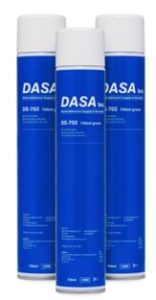Mechanical metal glues incorporate hot metal cements, epoxy glues, polyurethane cements, sealants, thermoses glues, UV restoring cements, silicon cements, acrylic glues, and other synthetic glues. Fundamentally, these are the parts that make up the different kinds of cements that are utilized in businesses to security metal together. The names not just mirror the concoction cosmetics of the different cements, yet additionally their attachment properties. Contingent upon the kind of bond that is looked for after and what sorts of metals are being fortified, a particular kind of glue will be utilized.

Acrylic cements are known for their great ecological opposition, which implies they can face a beating in extraordinary climate conditions, for example, downpour, hail, or ice. Likewise, contrasted with other pitch cements, acrylic cements possess a quick setting energy for occupations that should be done rapidly. Cyanoacrylates, all the more usually known as super paste, is a kind of acrylic cement that fixes in a split second on contact through a procedure that includes surface dampness. In the event that holding metals together that will be set in high temperatures, the kinds of epdm lijm that would work best for the activity are Phenol, melamine, and urea formaldehyde pitches. These are thermosetting bonds that are solid and will hold up for significant stretches of time when presented to extraordinary warmth. This is mainstream glue for holding modern parts, since they are regularly presented to these high warmth levels.
Polyurethane glues offer a solid bond, yet it is one that incorporates a lot of adaptability. These sorts of mechanical metal glues additionally perform well on toughness tests and have a significant level of effect opposition. Elastic and silicone glues are additionally offered as sealants. The elastic instances of these offer the most adaptability when required. The silicone-based glues and sealants, then again, are increasingly inflexible and offer a serious extent of sturdiness, notwithstanding protection from high temperatures.
The recently referenced glues are totally characterized on their compound cosmetics. There are others, be that as it may, that are characterized by their bond properties. These incorporate hot metal cements, pressure delicate and contact cements, thermoses glues, and UV relieving glues. Hot metal cements can be mollified by presenting them to warm and solidified again by chilling. This takes into account repositioning of metal parts on the off chance that an error is made, or if limited estimations should be set up. Thermoses glues are set into place and relieved utilizing heat or a blend of head and weight. At long last, UV restoring cements utilize bright or different kinds of radiation to fix, offering a perpetual bond that need not bother with warmth to set.
